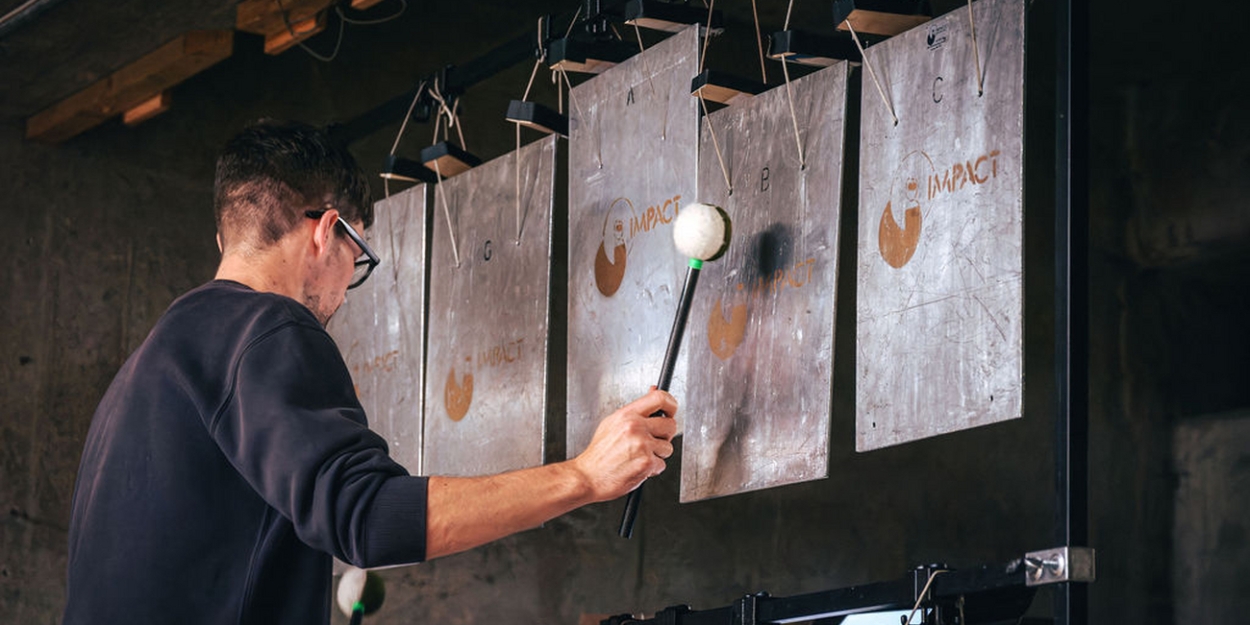Review: OLIVER LEITH: WRITTEN IN SWAMP AND GOLD, Bold Tendencies
A new take on classical composition

![]() “Visionary British composer Oliver Leith makes music that brings people together” seems like a very good place to start. Judging by the massive crowd at Bold Tendencies, he does just that, and we'll get to the visionary a bit later.
“Visionary British composer Oliver Leith makes music that brings people together” seems like a very good place to start. Judging by the massive crowd at Bold Tendencies, he does just that, and we'll get to the visionary a bit later.
The evening was called Oliver Leith: Written in Swamp and Gold, and included five works; three by Leith and one each by Charles Ives and Franz Schubert.
Within the huge array of seats was a water fountain, a postmodern interpretation of something you'd find at Versailles. It kept running for the duration of the first piece. If this was Leith's decision then so be it, but if an oversight of production staff…well I'll say no more.
The orchestra for the entire programme was the Philharmonia (assembled by Leith), and was conducted by Naomi Woo. Woo is a highly decorated conductor based in the States, and one can understand why. I believe an orchestra is only as good as who's leading them and Woo was dynamic, sensitive and physical throughout. Her movement like choreography in its own right - verging on the unhinged in crescendo moments.

I'm assuming Leith was responsible for the programming, and if so, or rather whoever was, made a good move including the two foreign works in between the Leith trilogy. One could find similarities, hunker down into deep analysis and basically continue on the vivid experience that Leith’s compositions cause.
When listening to known or conventional music, one can be outside of the event without even realising it. I don't mean that people aren't listening, but just that they do so in a way where the music glides over them rather than infiltrates. Gliding is a very pleasurable experience, infiltration a little different. The latter feels more like work, but the fallout can offer an elevated experience.
I found my thinking layered when listening to Leith's compositions. Initially trying to work out the techniques he elicits in order to make the new sounds being played, and then pondering how they make me feel emotionally, creating a narrative landscape I didn't know and hadn't necessarily expected.
In "Pearly, goldy, woody, bloody, or, Abundance" (2022) the players spoke, acting as both percussion and precursors. Musical phrases included what seemed like gibberish, giving the music a developed depth with a tinge of humanity. Elsewhere the players made humph sounds acting as an anacrusis before they played. This caused the music to sound like a continuation of emotion from each individual, feeling more alive than just straight playing. Towards the end of the piece, which felt on the Requiem side of a Symphony, fireworks started to go off, via synthesiser one assumes, and it totally worked. Giving a notion of detached yet connected celebration. The layers continued.
"The Housatonic at Stockbridge" (1914) by Ives encouraged the analysis of the mille-feuille in style composition. Nothing stood alone, and one understands where Leith may have found his penchant for the minor key and discord so tightly woven it feels closer to harmony. Ives developed the work in 1921 adding voice, piano and text by Robert Underwood Johnson. And I wonder if this version would have been even more enlightening.
Leith's" Honey Siren" (2019) is a work in three movements and adds even more contemplation to his canon. Here I heard terror, or rather the suggestion of it. The strings playing long, sustained notes that feature the aforementioned woven discord. The sound isn't an easy one, but intoxicating nonetheless. I'm also aware of Leith using a somewhat permanent baseline in his work. Like an omnipresent hum; how space might reverberate, or what the afterlife potentially sounds like. Is there such a thing as total silence? Not in London anyway, and Leith works the siren into "Honey Siren" with the subconscious ease of a true, capital city inhabitant.
Schubert's Symphony No.4 in C minor “Tragische” I : Adagio molto - Allegro vivace (1849) was an absolute trip after two, Leith-listening experiences. "Tragic (Tragische)" was the overall vibe, but in a very palatable way. Clear phrasing, repetition, accessible use of the minor and generally just masses of lush, large sound.
Closing the evening was Leith's "Cartoon Sun" (2023). Leith regards bells as a lifesource, something that signifies both joy and grief, so to open the work he serenades his audience as if acknowledging the start or finish of something. At Bold Tendencies the bells weren't in sight, so their atmospheric power had an even greater impact. In this work I connected with Leith’s use of brass. The instruments slip and slide within the composition, suggesting the melodic version of a roller coaster or a comedic turn. This juxtaposition with the work's overall grandiose flavour kept us all guessing, as did the whole evening.
Leith is a visionary in the sense that he isn't disregarding what came before in order to propose what could be. He offers a new take on classical composition, something that warrants serious consideration and pays the listener back instantaneously for doing so. Another riveting night at Bold Tendencies, also confirming their artistic vision and skill at making things actually happen.
Bold Tendencies continues until September 14
Photo credit: Dan John Lloyd
Reader Reviews
Videos

